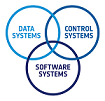Speakers
Description
In February 2020 the first GEO satellite servicing mission started with the successful docking of Northrop Grumman’s (NG) Mission Extension Vehicle (MEV) MEV-1 with Intelsat IS901. The automated docking was guided by a set of vision systems of which Jena-Optronik GmbH provided the 3D LIDAR system, a visual camera system with six optical heads and two star sensors. Jena-Optronik’s 3D LIDAR, called RVS®3000-3D, benefits from the legacy of 48 delivered RVS® sensors and its successor, RVS®3000. All RVS® flew flawlessly to the International Space Station (ISS) on board of ATV, Cygnus and HTV spacecrafts. RVS®3000 reached TRL9 via several flights to ISS on NG Cygnus vehicles from 2019. While RVS® and RVS®3000 are dedicated to tracking and identification of retro-reflector objects on flights to ISS, the RVS®3000-3D enables docking without retro reflectors as demonstrated in the frame of the MEV mission. To this end, powerful algorithms and hardware for real-time 6 Degree-of-Freedom (6DOF) pose estimation of an uncooperative satellite in space have been implemented. Here we present and discuss performance of the RVS®3000-3D using in-orbit data from MEV. Thereby, we focus on lessons learned regarding the integration of LIDARs in GNC/avionics processing chains.

